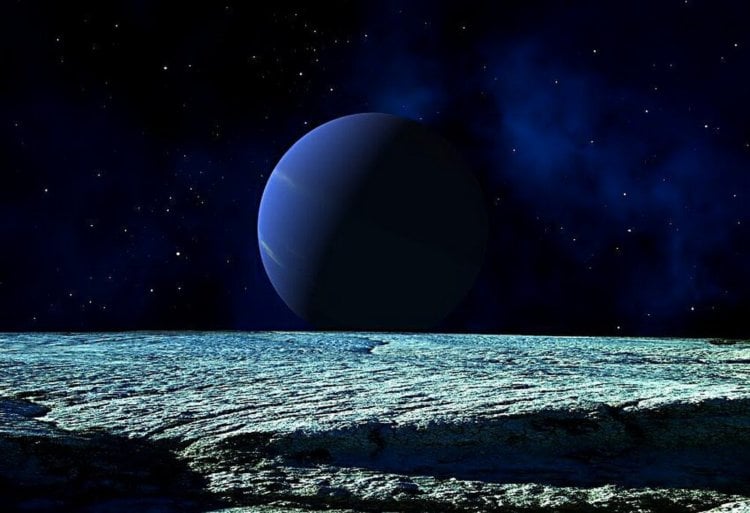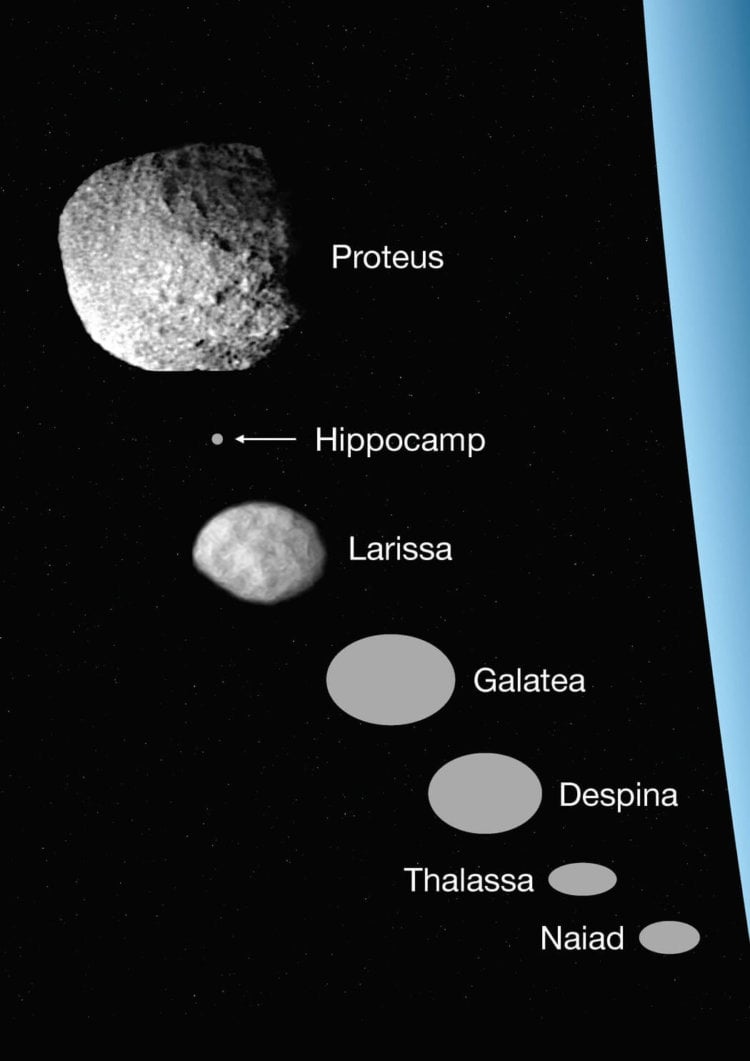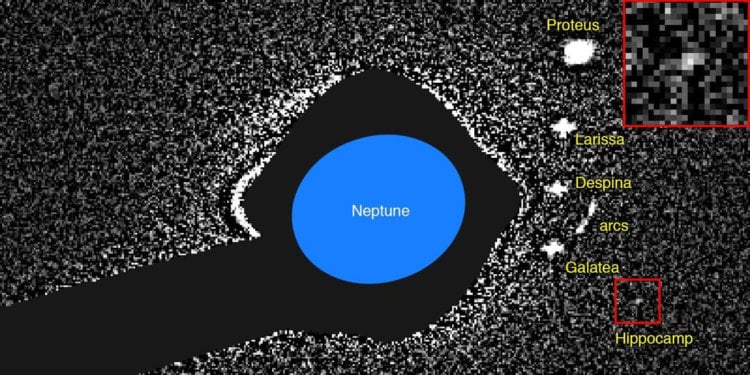Using images taken by a space telescope “Hubble”, a team of astronomers from the SETI Institute, which searches for alien civilizations, found at Neptune’s new tiny companion. Open the moon, called the Hippocampus, after the sea monster from Greek mythology, increases the total number of satellites of the gas giant to 14, according to an article published by the journal Nature.

The size of the open satellites account for only about 34 kilometers in diameter, making it the “youngest” among the moons of Neptune. The facility is one of seven (the other six: Proteus, Larissa, Despina, Galatea, Thalassa and Naiad) inner satellites of the planet which are very close turn around the gas giant (one turn around the planet, they take about a day).

The size of the Hippocampus relative to other moons of Neptune
When, in 1989, the spacecraft “Voyager 2” flew past Neptune, he discovered six new inner satellites of the planet. Seven other satellites rotate at a remote distance. Outdoor Hippocampus, in turn, is the second farthest from the planet the satellite of the inner group moons. To hide from the eyes of “Voyager-2” helped him to a bad angle while shooting, and also that the satellite itself is quite dark.
In order to further study the satellites of the gas giant senior researcher at the SETI Institute mark Showalter, along with colleagues carried out a monitoring system using the space telescope “Hubble”. Scientists stacked images to increase the effective exposure time, and as a result have discovered another moon, which “Voyager-2” are not noticed in 1989.
Astronomers suggest that the Hippocampus is an ancient fragment of Proteus, the large size of the satellite internal group, which is about 4000 times larger in the Hippocampus. The last orbit is near the orbit of Proteus, about 12 000 kilometers. On the surface of Proteus is observed unexpectedly large crater Pharos size of about 240 kilometres, which indicates that in the past with the satellite encountered another heavenly body. Hence, there was the hypothesis that the Hippocampus — the part of Proteus.

The very first image of the Hippocampus from the telescope “Hubble” in 2004
“The opening of the tiny Hippocampus allows you to expand the boundaries of our understanding of the internal systems of satellites of Neptune. Proteus and the Hippocampus was located in the past even closer to each other, but because of gravitational interactions with Neptune over time, drifted away from him. Now we can further explore the relationship between these moons,” — noted in their study, the researchers.
Given the speed with which it could migrate further away from the Neptune, a team of researchers suggests that the age of the Hippocampus may be a few billion years.
The study also presented another hypothesis. Due to the fact that Triton moves in a retrograde orbit (against the direction of motion of Neptune himself) and is similar to the Pluto structure, scientists suggest that he once belonged to the Kuiper belt and was captured by the gravity of Neptune. Discovered by “Voyager-2” moon likely formed after the event. It is possible that when Neptune captured Triton, the planet had an entirely different set of inner satellites, but the gravity of Triton led to their collision, which in turn led to the emergence around of Neptune are very thin rings and set of the current inner moons.
Such random events, scientists say, “help to demonstrate the important role of collisions of celestial bodies and change their orbits, leading in this case to the formation of the system of Neptune, which we are seeing now”.
To discuss the opening of the astronomers in our Telegram chat.